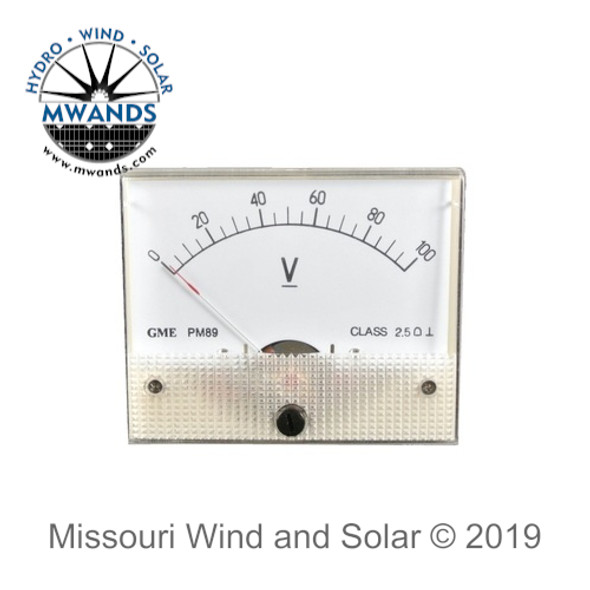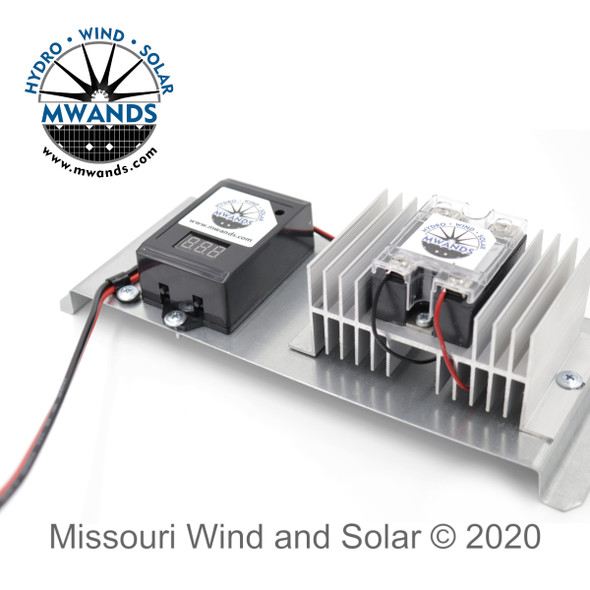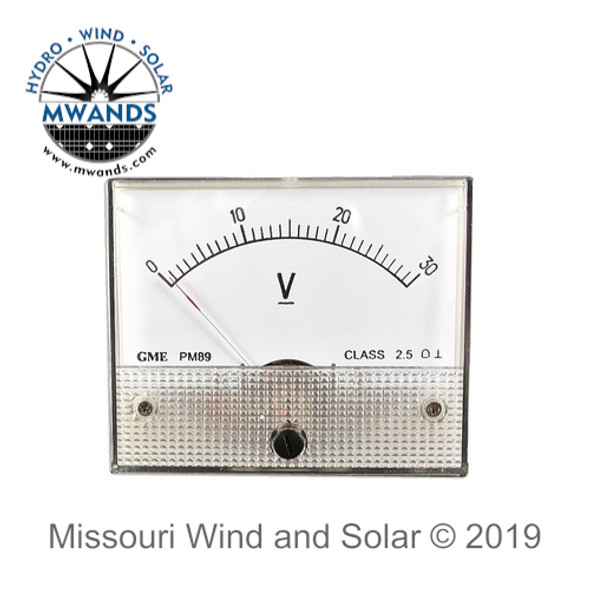Description
Digital Volt Panel Meter Features:
- Two gang switch box and shunt
- 100 Volt DC Digital Blue LED Display
- On/Off switch
Finally an affordable, ready to go amp volt for your alternate energy system.
This meter does not need a separate power supply.
A highly-efficient yet flexible volt meter which can be used to measure battery or charge voltages in 12, 24 and 48 volt alternate energy systems as well as many other systems including industrial monitoring. No separate power supply is needed! This meter has been designed specifically for alternate energy systems; yet, it also perfect for measuring vehicle, yacht, electric toy, tool or motorcycles having a 12V, 24V or 48V storage batteries.
Advantage over other panel meters by competitors:
- Compared with LCD panel meters, this LED panel meter has a high contrast display with super clear numbers and wide viewing angle.
- Super convenient operation (DOES NOT need an additional power supply.) Hook up the leads and you are set.
- On/Off Switch -- This meter uses only 30ma to 60ma ( .03 to .06 amps) at 24 volts, or approx. 10ma at 48 volts. If you are like many of us who simply do not like wasted energy, regardless of how small it is, then you will love this meter, as you can simply shut if off when you are not using it.
- Good looking, black matte solid metal face plate
- Can be flush mounted with our without the included dual gang switch box.
Features:
- Large (0.56in/14.2mm) easy-to-read blue LED display.
- Wide application range. Can be used to measure the voltage of various batteries ranging from 7.5 to 100VDC.
- Successive approximation-based AD conversion, which is fast and accurate.
- Highly-efficient DC-DC converter, with very low temp rise.
- Completely isolated, super efficient, custom made switch mode power supply.
- Reverse polarity protection.
Specifications:
- Min Input voltage : 8.5VDC
- Max Input voltage: 120 volts (D/C)
- Dimensions: 4.2" (W) x 4.2" (H) x 2.2" (D)
There is a big difference in this unit's internal power supply and the ones you will see being advertised for powering panel meters.
- Most "meter" supplies you find use a low cost linear voltage regulator. This is completely useless for 48 volt systems, and on 24 volt systems, you better have a big heat sink and expect to use about 1 amp of power just running a single meter. This supply uses a super efficient high voltage switching regulator, this is not cheap, but it is necessary!
- This supply uses a super efficient pre-regulator to allow higher than normal incoming voltages to properly handle 48 volt systems in an overcharged state or that are receiving high incoming charge voltages. This you will not find (that we are aware of) anywhere for any direct powered meter in this price range.
Hook up two wires and you are ready to go. Push the switch to turn the meter on. Push again to shut if off.
Tips & Things to Remember in DC Amp Meter Wiring:
- Use a DC amp meter for amp readings
- Don't allow incoming power to exceed the rated amperage (or voltage) of your meter it may break the unit
- Match the amp rating of the meter to the amp rating of the shunt bar
- Match the millivolts (mv) of the meter to the millivolt (mv) rating of the shunt bar
- The two wires between the meter and shunt bar need to be the same length
- A wind turbine should be connected to a separate meter than the solar panel(s)
- To test the amps or volts of your wind turbine or solar panel system with a handheld clamp on meter, you must use a DC model
Troubleshooting your DC Meter Issues:
- If the needle on the meter is a negative reading, switch the sense wires between the meter and shunt bar
- If the needle on your analog meter is not at zero when there isn’t incoming power, you can calibrate it by turning the screw on the front of the meter
- If your digital handheld DC meter isn't giving you an accurate reading, check the batteries in the unit
About DC Volt Meters:
- The positive and negative inputs are typically not marked on the DC Volt Meter. If you connect them to your battery and get a negative reading, simply swap the wires.
- 12 Volt battery systems should use a 15 Volt meter; 48 Volt systems should use a 70-75 Volt meter.
Wiring Diagrams:









